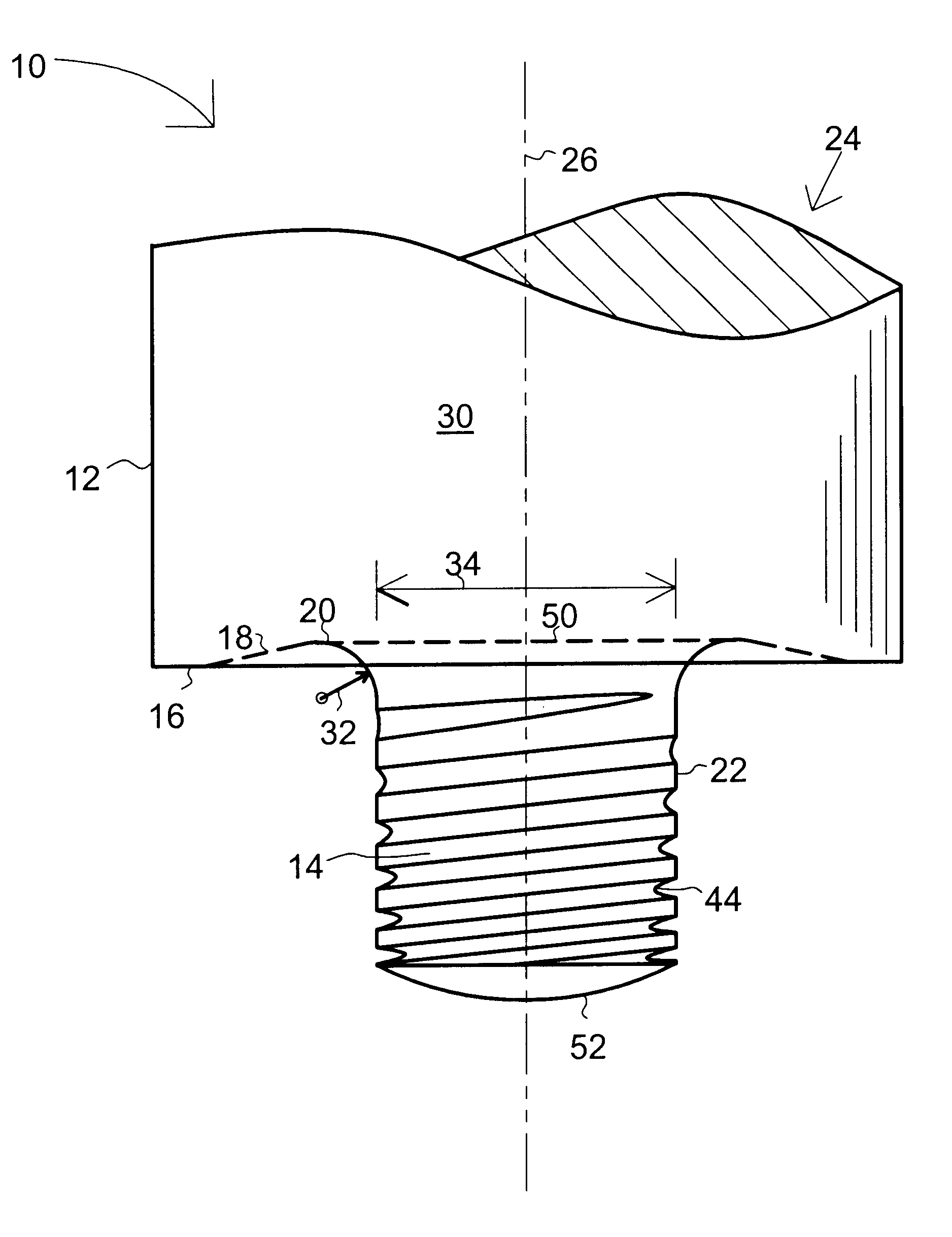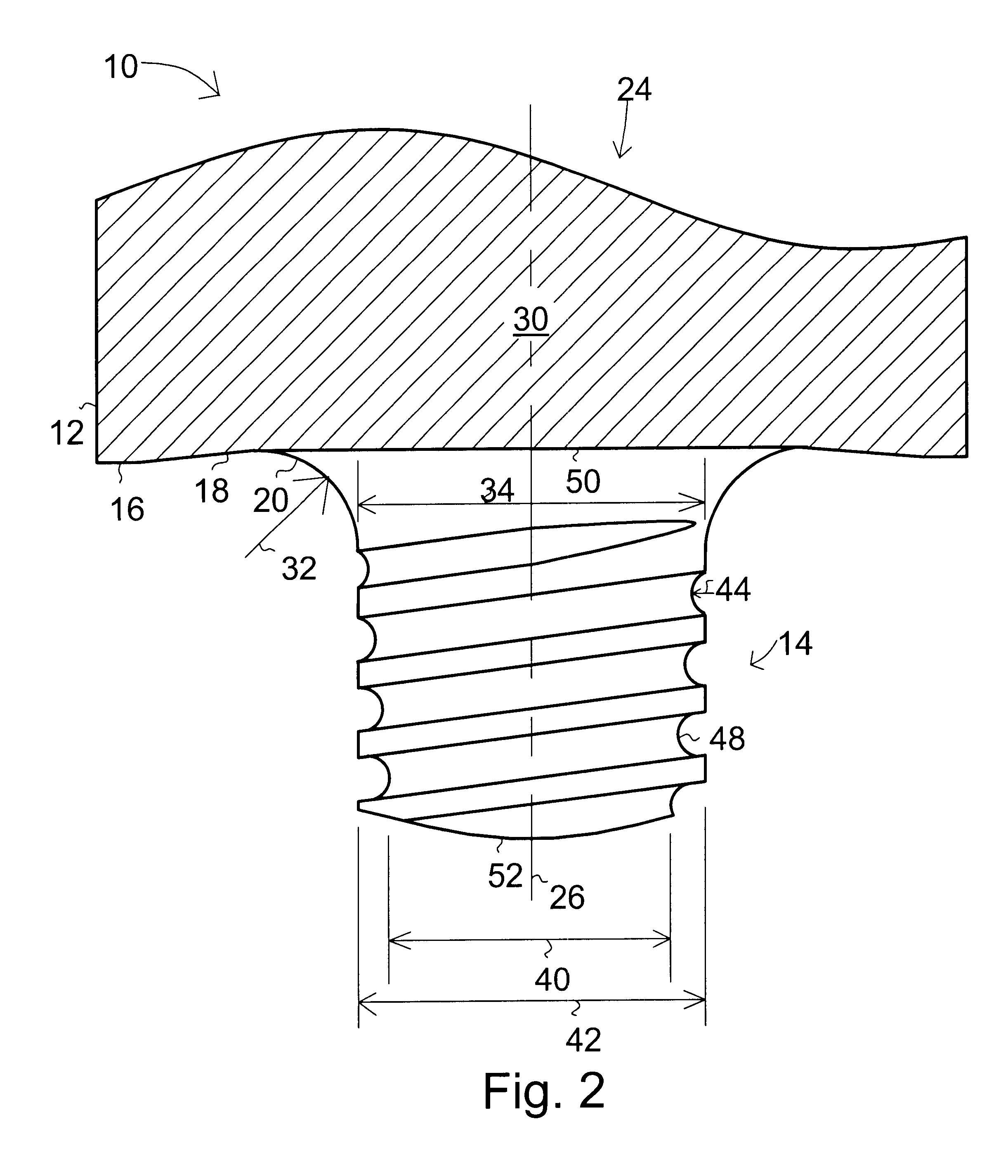Tool for friction stir welding
a technology of friction stir welding and tool, which is applied in the direction of auxillary welding devices, soldering devices, forging/pressing/hammering apparatus, etc., can solve the problems of workpiece metal overheating, the pin of the tool has a tendency to break, and the workpiece metal has a tendency to overheat, so as to reduce the cost of friction, reduce the fatigue of rotary bending, and high joint efficiency
- Summary
- Abstract
- Description
- Claims
- Application Information
AI Technical Summary
Benefits of technology
Problems solved by technology
Method used
Image
Examples
Embodiment Construction
With reference to the drawings and initially FIGS. 1 and 2, a friction stir welding tool 10 is shown having a cylinder 30 with a first end 24 for attachment to a rotating drive for rotation about longitudinal axis 26, a shoulder 12, and a shoulder face 16 opposite first end 24. A probe (tip) 14 projects at a substantially right angle to the shoulder face 18 and is integral with shoulder 12. Probe 14 has a longitudinal axis that is co-extensive with the cylinder axis 26. The present invention contemplates a wide variety of probe shapes and styles including but not limited to threaded, un-threaded, cylindrical, truncated cone, reverse truncated cone, and bossed probes and various combinations thereof.
The present invention features the addition of a transition geometry region 20 at the intersection of the shoulder face 16 and base 50 of probe 14 has been found to significantly increase the operational life of tool 10. When combined with other new features such as a tapered thread root ...
PUM
| Property | Measurement | Unit |
|---|---|---|
| Temperature | aaaaa | aaaaa |
| Diameter | aaaaa | aaaaa |
| Structure | aaaaa | aaaaa |
Abstract
Description
Claims
Application Information
 Login to View More
Login to View More - R&D
- Intellectual Property
- Life Sciences
- Materials
- Tech Scout
- Unparalleled Data Quality
- Higher Quality Content
- 60% Fewer Hallucinations
Browse by: Latest US Patents, China's latest patents, Technical Efficacy Thesaurus, Application Domain, Technology Topic, Popular Technical Reports.
© 2025 PatSnap. All rights reserved.Legal|Privacy policy|Modern Slavery Act Transparency Statement|Sitemap|About US| Contact US: help@patsnap.com



